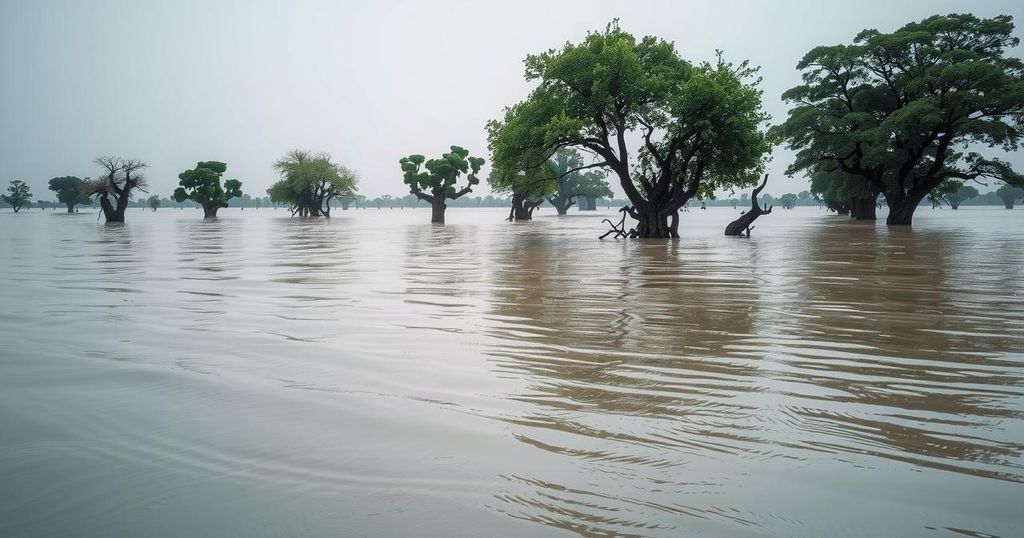Severe Flooding in Madagascar Claims 11 Lives, Prompts Evacuations

Severe floods in Madagascar have resulted in at least 11 lives lost, particularly impacting the Analamanga region due to heavy rainfall since February 15, 2025. River levels rose significantly, leading to widespread flooding, school closures, and emergency rescues. Many areas are slowly returning to normal as flood waters recede.
Severe flooding has struck parts of Madagascar over the past two weeks, claiming at least 11 lives, with the hardest-hit areas including the Analamanga region. Increased river levels since February 15, 2025, resulted from heavy rainfall, leading to widespread flooding and school closures in affected regions.
Heavy rain in mid-February triggered Red Flood Warnings across Madagascar, particularly impacting Analamanga, Itasy, Vakinankaratra, and Amoron’i Mania. Reports indicate that the intense rainfall led to river levels surging by 40–90 mm in some localities, resulting in extensive inundation.
By February 18, water levels in several rivers had reached alarming heights, with the Sisaony River rising between 2.8 to 3.3 meters and the Ikopa River increasing from 3.41 to 3.61 meters in just 24 hours. Flooding along the Sisaony River was reported from February 15, prompting emergency responses and rescues in the region.
The rising waters necessitated the closure of schools on February 17 and 18, with plans to reopen on February 19 delayed due to ongoing flooding. Some educational institutions resumed classes on February 22 as water levels finally began to recede, allowing a return to normalcy in parts of the region.
The severe flooding in Madagascar over the last two weeks has resulted in at least 11 fatalities and extensive damage, particularly in the Analamanga region. Heavy rainfall has caused river levels to rise significantly, resulting in widespread evacuations and school closures. As waters recede, some areas are beginning to restore normalcy, although the need for continued monitoring remains critical.
Original Source: watchers.news






